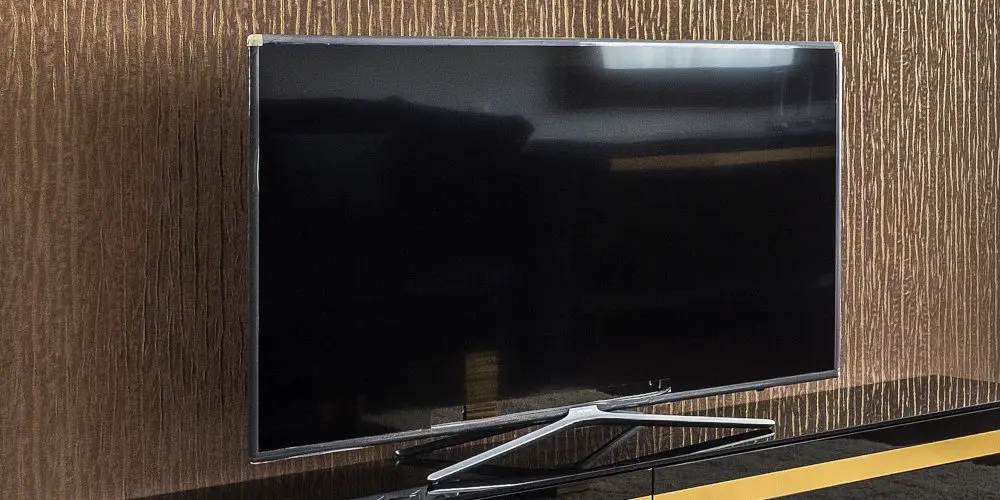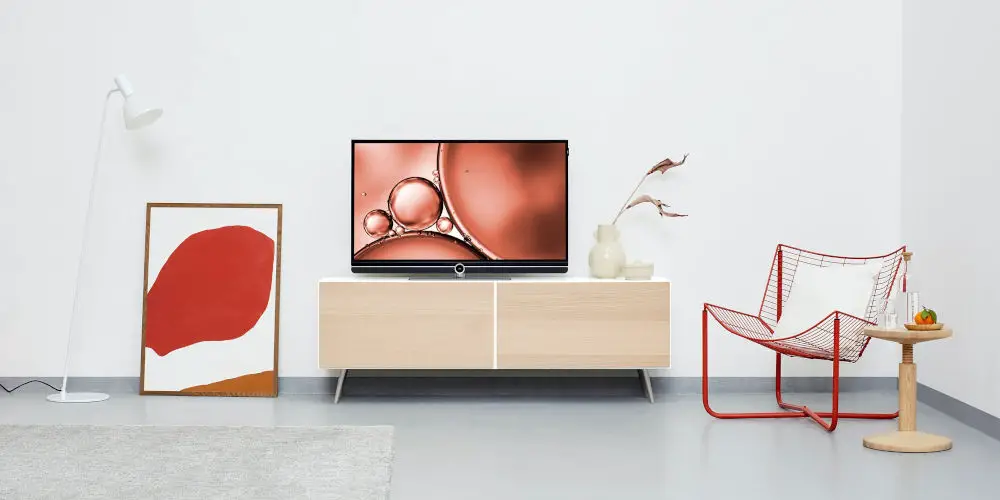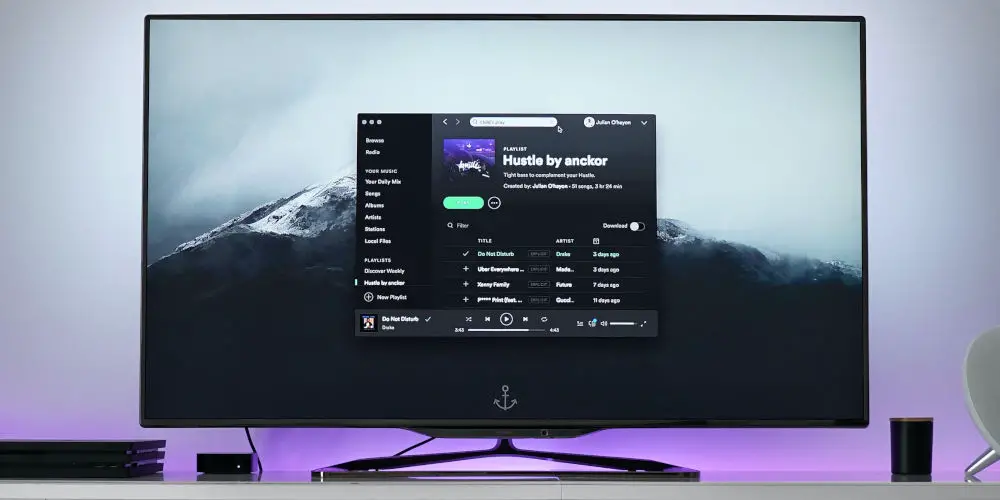Which is better OLED vs QLED TV?

A new TV technology acronym seems to crop up weekly! At the premium end of the TV market, two technologies stand out: OLED and QLED. But is it better to have an OLED vs QLED TV?
We live in the golden age of TV technology with plenty of 4K content available across sports, TV and films. Plus, many streaming services offer 4K as standard, including Netflix and Prime Video (FREE 30-day trial).
Many like to keep up with the latest technology and have upgraded to 8K. Some are still just exploring the multiple HDR TV formats available.
With limitless content at your fingertips, all available in high definition, regardless of what you feel like watching, you can experience as if you were there.
You might be confused by the chatter surrounding OLED vs QLED TV. Both are premium technologies, so it’s easy to assume they are equal. Without a clear definition of each type, buying a new TV can prove tricky.
Let’s explore each technology in-depth and compare the differences between them. By the end of this article, you’ll feel empowered to choose the best technology for you.
What is OLED?
Organic light-emitting diodes, or OLEDs, are made using organic materials. In an OLED TV, the pixels work independently and individually light up based on when they’re required.
Pros
OLED TVs don’t have a backlight, so use much less power than other types of televisions. Another benefit of no backlight is it’s able to create deeper blacks that aren’t jeopardised by a light shining from behind the screen. The technology also works well with HDR content.
As pixels act individually and quickly react, even during fast-moving scenes, there’s minimal blurring between frames and offers a super faster refresh rate of 0.001ms.
Since OLED screens don’t have a backlight, they are the thinnest TV sets on the market yet offer larger viewing angles than other technologies.
Cons
OLED TVs do have several disadvantages. They are quite expensive to produce. Thankfully, prices are softening as LG (the sole manufacturer of OLED panels for TVs) has begun to sell panels to other manufacturers, including Sony, Panasonic and Philips.
By opening up the market in this way, there is more choice across a wider price range. However, compared to LCD models, they tend to be more expensive.
Until 2020, it was impossible to find smaller-sized OLED TVs as the technology wasn’t available in screen sizes smaller than 55 inches. 2020 saw LG launch the 48-inch OLED48CX. However, due to the low number produced, they are only slightly cheaper than buying a 55-inch TV.
There’s chatter that 42-inch OLED TVs are coming soon that will be produced in a greater volume, resulting in a more affordable price point. That said, we’ll have to wait and see when models start hitting the market.
Unlike QLED screens, which are super bright, OLEDs struggle to reach the same peak brightness. However, the deep blacks create an exceptional overall contrast, which partly compensates for the reduction in brightness.
Most OLED panels are susceptible to image retention and even burn-in, just like the now ancient plasma TVs! And while this isn’t a widespread or even a common problem, manufacturers feel the need to warn customers and build in features that reduce the risk.

What is QLED?
Quantum dot light emitting diode or QLED TVs use Quantum dots to create a broad colour spectrum. The technology mimics the colour and brightness experienced in real life. As with OLED technology, each pixel emits light independently of each other.
Samsung has yet to offer an OLED TV. Instead, they prefer to build screens with this rival technology. But that’s not to say when comparing OLED vs QLED TV that Quantum dots are better.
Pros
Using an LED backlight, QLED TVs deliver 100% colour volume, enabling the screen to maintain colour accuracy across the spectrum from the darkest blacks to the brightest whites. They offer the highest peak brightness and deliver rich, highly accurate HDR pictures.
QLED TVs have been designed for use in all lighting conditions with technology to help absorb or redirect external light to reduce reflections. Plus, they typically come with a 10-year screen burn warranty.
While OLED TVs are only available in a limited range of screen sizes, you can find QLED TVs in a variety of sizes between 32 and 98-inch.
Cons
There is a little dirty secret with QLED TV that you might have spotted. As they use a backlight, the quantum dots do not emit light. Instead, the light from a backlight passed through them, just like an LCD layer does on standard LCD/LED TVs.
While this does improve colour vibrancy, it isn’t as game-changing as Samsung suggests and results in a slower refresh rate. Many have concluded that OLED TVs offer a distinctive advantage over QLED TVs, even when weighing the loss of brightness.
Samsung has tried to increase the contrast of its QLED models by re-engineering the LED backlights to mini LED backlights. Named Neo QLED TVs, these premium models, such as the QE65QN95A, create greater contrast by increasing the number of independent dimming zones.
These Neo QLEDs are a step towards TVs that combine the brightness and longevity of backlit sets with the contrast of OLED.
That said, it does appear that true QLED TVs that use photo-luminescent quantum dots which operate independently are still very much in the future. Samsung’s most recent releases have focused on 8K QLEDs that utilise the next-gen version of their micro LED technology.
Only time will tell if Samsung will change course and launch a range of OLED screens using LG technology. Such products would be a sizeable U-turn over their vocal opposition to the technology.

OLED vs QLED TV: Your best option
If you’re looking to buy a new TV today and struggling to choose between an OLED vs QLED TV, you’ll have to compromise, as sadly, the ultimate TV doesn’t yet exist. Thankfully, buying either type of TV shouldn’t increase your electric bills.
While Samsung continues to work on self-emissive quantum dots and Micro LED technologies, it will be years before These types of TV are available to the general public. It’ll take even longer for prices to be suitably affordable for the masses.
QD-OLED TVs
Some are pinning their hopes on the forth-coming combination of QD-OLED TVs. These promise the best of both technologies. So remove the need to choose between OLED vs QLED TVs. We’ll save judgment until these TVs are available and not based on marketing hype.
Comparing existing models
Comparing the current options, Samsung’s QLEDs deliver a brighter and punchier picture than OLED TVs. That said, while not as bright, OLED TVs offer better colour contrast and wider viewing angles.
But this is only part of the puzzle, as the processor used by the TV set is almost as important. If you were to compare OLED TVs from Sony, Panasonic and LG, they would all perform differently. One brand might offer richer colours, while another could handle motion more smoothly.
The same is true for all of Samsung’s QLEDs. Each model has its own particular quirks and positives. So, you’ll want to compare models based on real-world experiences and not solely on technical information.
Don’t buy without testing different models of TV in person
It’s essential if you’re looking at buying a TV to experiment with different models and brands. Please don’t settle on the first unit you see. Rather than comparing OLED vs QLED TVs, look for the best TV for your budget based on your gut feeling and real-world comparison.




